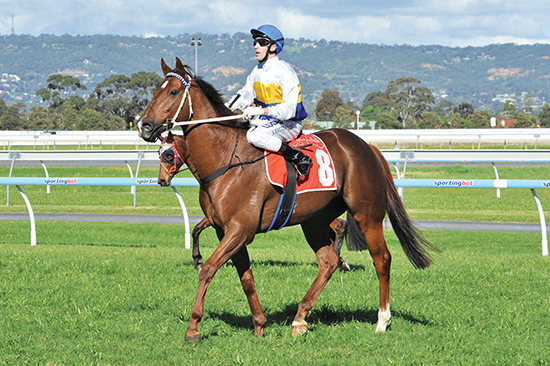 With Caroline Price and Michelle Strapp
With Caroline Price and Michelle Strapp
Words by Chris Hector and photos by Roz Neave. RACING PHOTO BY ATKINS PHOTOGRAPHY.
Once upon a time, Thoroughbreds were all our jumping riders had to ride, and the overwhelming majority of them came off the racetrack. Recently with the popularity of purpose-bred Warmbloods, the Thoroughbred has fallen from favor, but as this session with Michelle Strapp and Caroline Price demonstrates, the Thoroughbred still has much to offer.
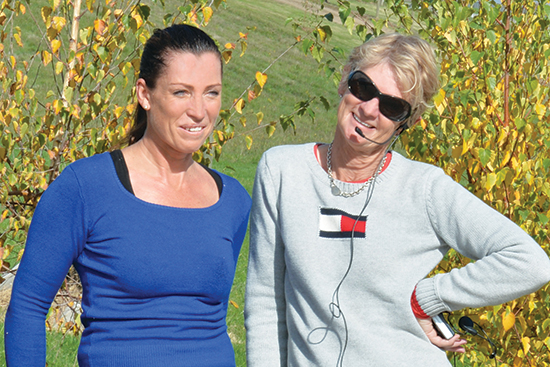 Caroline Price certainly should know her Thoroughbreds, her husband Mick Price is one of Australia’s leading racehorse trainers, and Michelle has always been a fan of the blood horse. She doesn’t think the day of the racehorse-turned-jumper is over…
Caroline Price certainly should know her Thoroughbreds, her husband Mick Price is one of Australia’s leading racehorse trainers, and Michelle has always been a fan of the blood horse. She doesn’t think the day of the racehorse-turned-jumper is over…
“I don’t think so, I think that a very good Thoroughbred is an excellent quantity to have. It is hard to get the ones we are after, that are bigger, taller, with a bit of muscle about them to create more power. There are a lot of smaller Thoroughbreds for the sprinting, but not so many classic types. It is also difficult to get a Thoroughbred that is sound, has a good mouth, and all the other qualities that we want, but I think a good Thoroughbred will always be able to win a big class.”
Grand Prix class?
“I think they have their place, obviously the Warmblood has the bloodlines concentrated to produce the power to jump, and so there are more of them, but they also get a much better start. If you took the well bred Thoroughbred with a good type and conformation, and had the horse right from the beginning, I don’t see any reason why you can’t produce them as Grand Prix horses.”
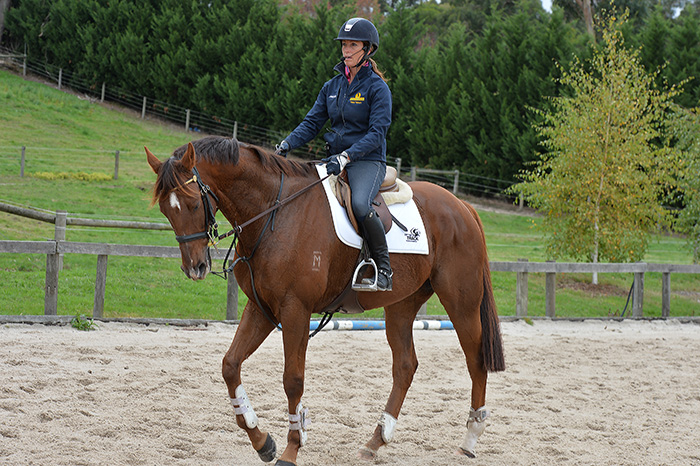
Do you have to have a different training system for Thoroughbreds?
“The core basics of training are the same for any horse, they all have four legs and while their conformation varies, and the way their balance works, it takes the same basics to produce them. It can change because of their brain, how much pressure you put on the horse: is the horse naturally on the forehand? Naturally more active?”
“The beauty of the Thoroughbred is that they have like a fifth leg, they naturally keep the spring, keep up under themselves. A lot of the Warmbloods we have bred can be big, their canters are big and slow, and riders find them hard to contain with lightness and spring. Those Warmbloods need a lot of work to produce them to be more athletic, where often the Thoroughbred gives you that – the gift is there.”
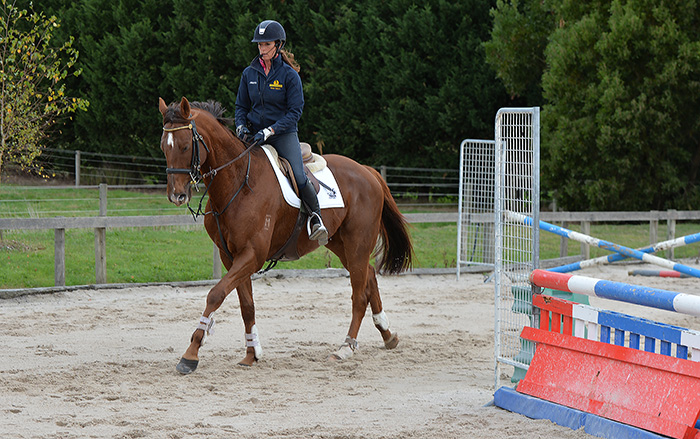
Is it hard to find Thoroughbreds with scope?
“I think what lacks in a Thoroughbred is often what has happened before you get them – they can have a really bad mouth, they are already very tight and stiff in the back, and that takes scope away. If you can get one with a good mouth, a good length of stride, complemented by its natural willingness to go forward with zest – a great product to start with.”
“I think their gift can often be part of the problem because the Thoroughbred gives to you activity, it gives that fifth leg, so riders just jump them before they train them. They can jump really quickly. They can get down to a fence because they have a natural canter, a rider can bounce the canter to find distances, because its natural energy, it can create a spring in its stride easily. Then the horses end up traveling around courses with short necks in bottled little fast canters, so they can never develop scope, they can’t get down lines. It is the training that is needed for these Thoroughbreds off the track so they can give you what you want and need, and that’s what a lot of them don’t get.”
what to do with the TB straight off the track follows
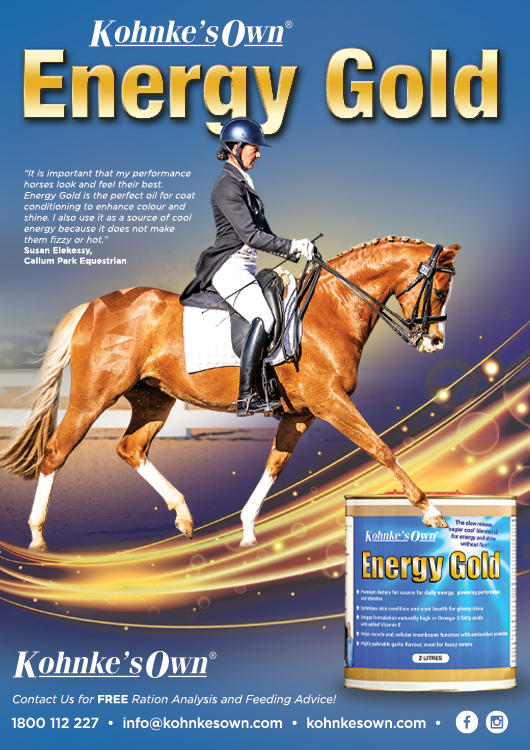
When they come off the track, is it a lot of work to chill them out?
“It depends. I have a Thoroughbred here, and he is just the opposite, it is like getting on a Warmblood – with him you have to make him a little quicker. Once you make him naturally quicker, then he is really easy, whereas some of them are the opposite. We tried one recently for a girl, and it was like a cat – very athletic, and you could easily get to a fence – I could see him being taken straight out and jumping at training days – but it is the last thing it needs at the moment, because the moment it heads to a fence, it is so tight and shortens its neck and jumps in two halves. Give horses time at home to develop their understanding of what you are trying to teach them to do with their bodies ”
It really is the same boring basics isn’t it – Warmblood or Thoroughbred, it’s the same…
“Exactly. The more you train, the more horses you go through, the more you learn, the more you realize the importance of the horse bringing its activity to a hand that it likes – contact that it likes. If a horse doesn’t like the contact, you will get a short choppy stride, or just a running canter. It just makes the ride a lot more complicated. The biggest gift as a rider is to have hands that can read a horse’s brain and hind leg.”
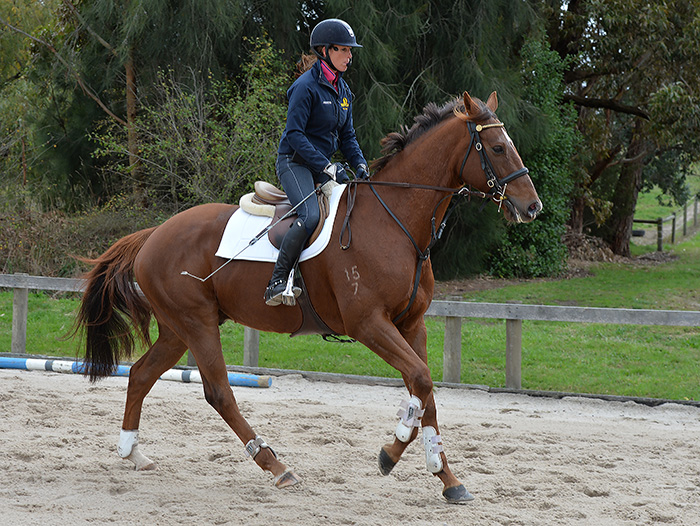
Are there specific problems when they come out of racing – like being filled up with steroids…
“You see over a six month period that the horse may not do well at first, but generally they work through that and come out the other side. I think what makes a big difference to horses, and Thoroughbreds especially, is consistent training. When they get into a routine and they start to work in some sort of harmony, then you are on the way. It is not that you never put pressure on the horse, but if they start to enjoy their work, you find the place of harmony, then the horse starts to blossom. If the horse is really tense, it is not really going to develop muscles because there is no oxygen getting to the muscles.”
next we move to the horse we are working with
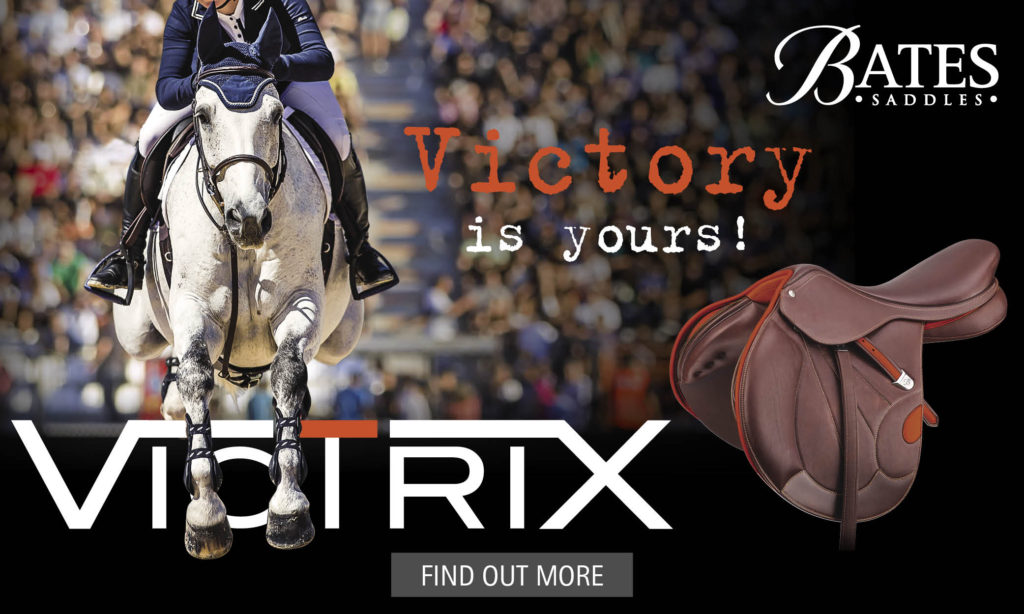
What do you like about this particular Thoroughbred, King Usain?
“I like the way he is short coupled, I like the way he is quite powerful behind the saddle, he’s got a really good bum – a power bum. He is quite strong in the back and he is long enough in the rein. He is built uphill, his shoulder is good. He’s got a good natural expression, he walks in here and he holds himself, stands up and holds himself.”
Do you care what his breeding looks like?
“Caroline does, she does the breeding hunting. But, yes it does make a difference with the Thoroughbreds. Most of the ones that can jump go back to the good bloodlines. The Grosvenors have always jumped, but they have a really difficult attitude, this one has Grosvenor in it.”
“I’ve only seen this horse once, he is literally brand new. He came here last week, he was naturally active, but not stupid. His mouth seems very good, he has a little bit of a tongue issue, so we are going to have to see how he goes with that. But he’s a Thoroughbred coming in after quite a lot of racing, so he is a bit tight, but basically he looks natural, very rideable.”
It makes a difference, the trainer they come from?
“Totally. Some are terrorized, their eyes are rolling into the back of their heads, and they are really worried. The beautiful thing about a Thoroughbred, is that they are sensitive. They are naturally active, they are thinking forward, they are sensitive to the rider, and that’s what we love about the Thoroughbred. Now the Warmblood breeders are trying to put those Thoroughbred qualities into the mixture.”
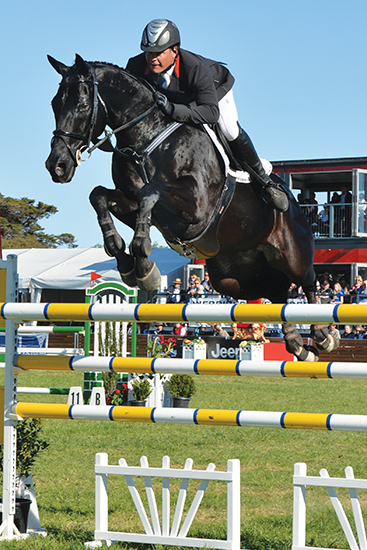 If you can get one with a good mouth and a good natural stride, it has scope because it has a heart, it has a natural instinct to want to jump and to travel, it has a natural forward thinking and that creates scope. Billy Ramont and Stardom.
If you can get one with a good mouth and a good natural stride, it has scope because it has a heart, it has a natural instinct to want to jump and to travel, it has a natural forward thinking and that creates scope. Billy Ramont and Stardom.
THE WORKING SESSION
“One of the wonderful things about working with Caroline, is that she doesn’t get onto the young horses and start bending their necks, she understands straightness. All she wants to work on at the moment – like with any young horse – is trying to get consistent contact to two reins. Trying to get the horse to travel forward into an even contact. Remember when we did the story with her young Holstein-bred horse, Finn, he didn’t want to naturally go forward – that is already in place with this horse, he wants to go forward, she doesn’t have to work on making the horse quicker and more active, that is natural with this horse. What she has to do with this horse is make sure that the activity arrives at a bridle that the horse likes. If she doesn’t do that, then the horse is going to get short and choppy, and short and choppy won’t produce a good horse. What she is trying to do is keep her hands really steady, and encourage that contact.”
 “It’s no different from when we were training the Warmblood, we do lots of little transitions, shorten the trot, lengthen the trot, if he drops the contact, change your mind and go forward to the bridle. You are always trying to arrive at the bridle, as soon as he comes a little green in the bridle, forward and into a steady and elastic hand.”
“It’s no different from when we were training the Warmblood, we do lots of little transitions, shorten the trot, lengthen the trot, if he drops the contact, change your mind and go forward to the bridle. You are always trying to arrive at the bridle, as soon as he comes a little green in the bridle, forward and into a steady and elastic hand.”
“Caroline is just trotting some nice straight lines. A lot of Thoroughbreds off the track, after the brain, the biggest problem is the bridle. As soon as the contact is inconsistent or they drop the bit, they don’t accept the bridle, then it really affects the rhythm of the pace. This horse’s shorter side is to the right, he likes to keep the right side a little curved, and the left side longer. So that is why we travel on diamonds, straight lines, squares, trying to get the horse even to two sides – even to the bridle and its body the same length on both sides. Right now he is heavier on the left rein, so Caroline gives him nothing to hang on to. She teaches him to move away from her left leg, which lightens the horses left side.”
strengths and weaknesses next
“Every horse has something they do well, but there are always weak links. Sometimes the big Warmblood does the big striding powerful canter well, but riders find it hard to achieve adjustability in the canter and lightness. What a Thoroughbred does well is stay active and mentally forward, but often so far forward and so unsettled that they just get short and choppy in their work.”
“As soon as you lose the rhythm, come forward again. If he comes above the bridle just close your fingers on the contact and ride forward to it. What you have to do with these Thoroughbreds off the track is try to produce them as a nice educated horse, so that they have a position in the world – whether they end up being a young rider horse, an eventer, or suddenly you find one with exceptional talent who goes on. The best thing we can do, is just get them so they travel well, and give them every opportunity to produce a jump for you, instead of just taking advantage of what they do well.”
Why the martingale?
“The horse at the moment doesn’t need a martingale. There is nothing going wrong, but I always think that an aid like that could come in handy if the horse gets a fright, comes above the bridle, runs away. It is there, just in case it is needed.”
CANTER WORK
“The horse has a lovely natural canter, really active, springy. Now Caroline is nice and light in the saddle, but when she brings her body back a little, you will see the horse struggle for balance – so then out of the saddle and light again. When Caroline brings her angle back, the horse has to change his centre of gravity, and the canter gets a little weak, then get out of it straight away. The horse gets a little tense because he doesn’t know how to bring his balance back. You don’t stay in the one position, you have to know when you have held the short canter for too long, when we collect the canter, that’s when we can lose rhythm and tempo . You have to keep the rhythm underneath you, always move forward to reproduce it.”
“What Caroline is saying to the horse when she comes back is, what I want you to do now is keep the canter a little shorter, active, lower your croup and lift your belly up… As if the horse is going to understand that! He hasn’t read the manual yet. It is little, short transitions like that until the horse learns to just come back, and keeps the idea of forward thinking with his legs, while not dropping the contact or running through the bit – then he starts to feel comfortable in that smaller box, and gets stronger and stronger in his mental understanding, plus physically stronger.”
“When I talk about coming back in the position, I don’t use the word ‘seat’, I try and keep away from the word seat, because I think it is very misleading. People think ‘seat’ and they think ‘bum’. I’m talking about from the rider’s heel to the top of her head, that’s her whole body coming back to balance the horse. When she comes back, I like her to feel that even when she sits, she is still allowing the horse’s back to come up, she is not going to push down.”
“Ride a circle – and you can see she is not pulling on an inside rein, not bending the horse’s neck, just riding the whole body into the turn. She is aware that the outside shoulder is now floating out, so she brings the two shoulders back under the centre of the horse and her.”
The horse comes back to trot, then Michelle asks for the walk transition: “Carry your hand and walk, and then just halt. We did that because he didn’t quite understand the half halt. Don’t be afraid of occasionally doing the walk, and the halt transitions, as long as you are smooth with your hand. Sometimes when you go to half halt, he just tries to run through the bridle, which is a good sign – I’d rather a young horse that would do that, than a horse that is frightened of the bridle. He’s got a very soft bit in his mouth, and I would rather end up with more contact so we’ve got a bridle that we can actually work with, and we can teach the horse the half halt, so that we can teach him to sit up, you’ve got something to sit against, rather than something that drops away from you.”
“The work at this stage is trying to keep the horse straight, so if it falls a little right, she has a little right leg, falls a little left, left leg. Caroline has started to teach the horse leg by turns on the forehand and turn on the haunches. They are the first lateral tools – and if the horse goes to step back, step forward to the bit. The horse is bound to get a bit grumpy in this situation, it’s like a fly biting its side when it feels the spur, that’s normal. This is the work that has to improve, he has to come off the leg a little better – left leg, right leg, so Caroline has some lateral tools. Quarter turn, left leg, left leg, get it done and now come forward.”
Time to canter on the other rein, and once again, I love Michelle’s attention to detail, ‘thumbs up, don’t flatten your hand’ and ‘relax your shoulders’, ‘really think about your arms being extensions of the reins’. Good riding is truly about doing simple things perfectly…
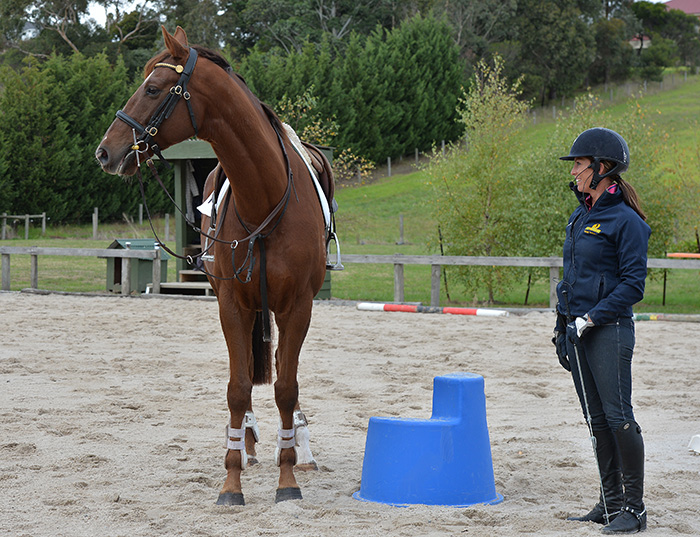
“Same exercise, straight lines, gradually bring your body back into the saddle a little bit. Just occasionally down the long side, while you are forward, let your hands come up the neck, to allow him to take the rein.”
“You can see that what this horse is doing at the moment, is what he does naturally. Imagine if you just start jumping around courses, because he could, and there are a lot of riders who would. Riders could get around courses on him now, but how much more of a horse could you make out of him if you first teach him to lower his neck, to travel longer, to trust and understand your leg and hands. That’s the aim.”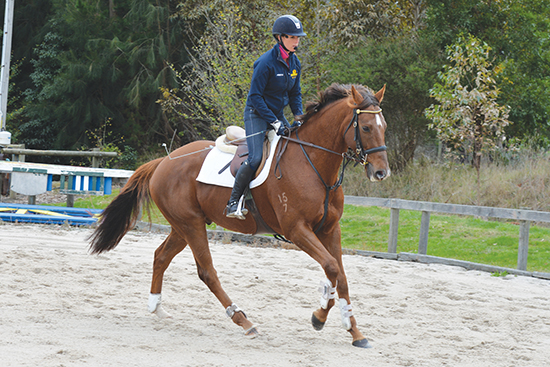
“You have all that good energy coming to you, the only thing you have to do is make sure he likes coming to the rein, that he wants to go to your hand.”
“At the moment it’s no good trying long and low because he will just run away, you do not have enough tools to hold your line. First the horse has to understand the aids more, he’s got to learn to take rein, at the moment if you give him the rein he just thinks faster, not lower. He is going to really be able to jump to the best of his ability if first we teach him how to use his whole body – and until we do that, we’ll never really know how much talent he has.”
“The horse has stride, he has power, if he could actually travel with a longer neck and stretch over the back, that gets him to use his whole body.”
At this point we can see a fair bit of tongue poking out… You don’t worry about this?
“I’d worry if he was a dressage horse. We worry about what feel Caroline has in her hand, that is more important. We are not going to do anything dramatic to the tongue, tie it down or put tight nose bands on, because if we do that the horse is only going to get tight to the bridle and not want to go forward. We are hoping in time that it settles, but what is more important is what Caroline is feeling in her hand.”
“He doesn’t have a nose band on at the moment and we don’t want to trap him with tight nosebands. You often find when you trap horse’s mouths that they get very brittle in the bridle.”
Don’t miss part two of this story with Michelle and Caroline, coming soon…
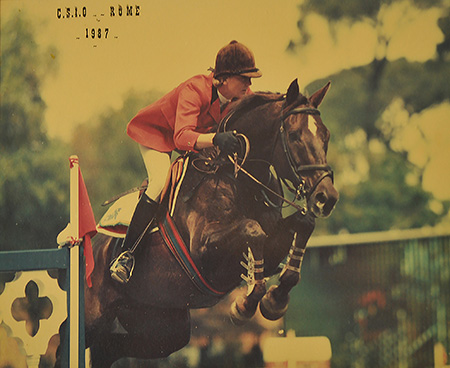
Vicki and Apache winning the Grand Prix of Rome at the Piazza di Sienna in 1987
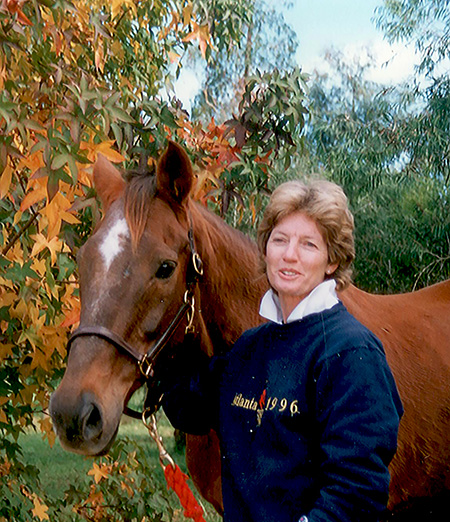
Apache living out his retirement back in Australia with Vicki
Vicki Roycroft was for a long time the champion of the Thoroughbred as a showjumper – not surprisingly since her wonderful Thoroughbred, Apache carried her to victory in the Grand Prix of Rome in 1987, more recently she has made the change to the purpose-bred Warmblood…
“I would still ride a Thoroughbred if a good one came around. I think they are still there, they are just a little hard to find – harder to find sound ones, the type you want. The racing industry now dictates what the Thoroughbred is like, and it is not what we want.”
“I still wish that I had a crystal ball, and you could get together those wonderful jumping Thoroughbred lines and be able to produce a specialized Thoroughbred sport horse. The Agricola line, the King of Babylon line, there were a heap of them, but of course we didn’t discover them until they were nearly dead, so we didn’t get too many from those lines. That’s the problem. I’ve still got one or two Thoroughbreds now, but the Warmblood is being produced specifically for the purpose. I wish the Europeans had been able to come here and get some of those fabulous lines because then they would have an even better product. What the Europeans are producing now is specifically for our job, but they are still using a lot of Thoroughbred.”
Would Apache still be competitive today?
“He would still win a lot of classes, but whether his brain would have been able to cope with the fact that they have to go so fast to win classes. He was in the emerging days of the horses having to be careful, lighter rails, shallower cups, were just starting when he came around.”
“Look at a horse like Four Corners, that my ex-brother-in-law Barry Roycroft rode – what a lovely quality Thoroughbred horse that was, but he was in the era of heavy rails. He was still an outstanding horse and became an Olympic horse, but I think that sort of horse nowadays, would have been very competitive.”
Do you look at the pedigree before you take on a racehorse?
“If I have someone ring me, I look at the pedigree. Years ago when we jumped we only had Thoroughbreds and we had to go on something. I love to see names like Sir Tristram, Sir Ivor, Vain, if I see some of those names, then I say, let’s try this one. He’s got Storm Bird and Green Dancer on the topline, and the mother is by a Grosvenor stallion, and her dam, has Sir Ivor. I had a picture first and thought, he’s a nice type, then I looked at the bloodlines and thought, seven rising eight, a bit older than I would like but let’s give him a try.”
“Now I think we don’t recognize those names because we are not going through so many Thoroughbreds, we don’t know what will jump. There might be thousands out there, and we just don’t know about them. We didn’t train King Usain. He was trained by Matt Hyland, then he went to Paula Trenworth in Adelaide, and she contacted me. I’ve only had six rides on him, my working pupil did the first few rides. He’s just a nicely balanced horse to sit on, the saddle sits well on him.”
The future?
“I’ll just take it a month at a time, keep assessing him. If he doesn’t make a showjumper, I think he is a pretty sure bet to make an eventer, he moves, he’s brave and he’s got a jump. We might work towards that if he’s not quite careful enough to be a showjumper. He feels scopey…”



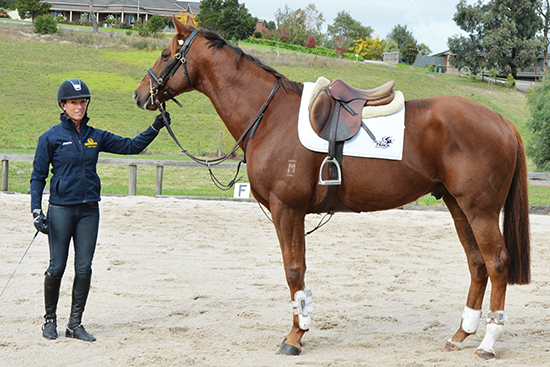

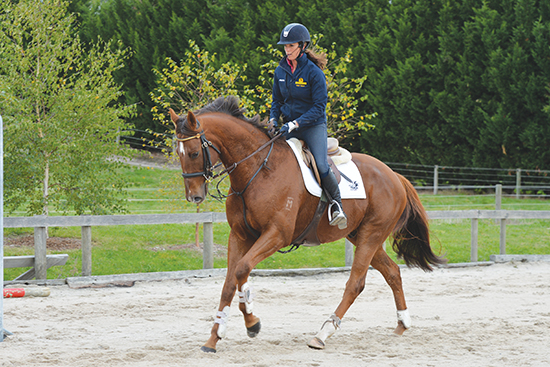

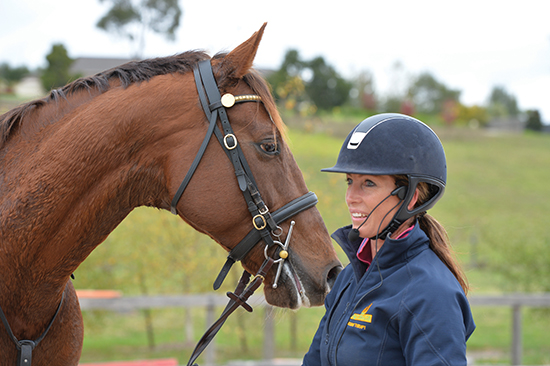
This is the best website in the world